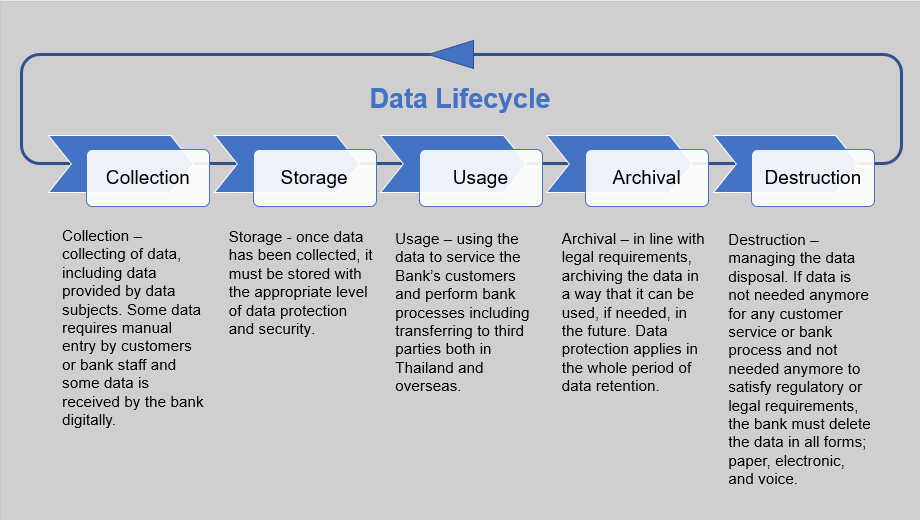The Value of Effective Data Damage Practices in Shielding Sensitive Details and Ensuring Computer Protection
In an age where data violations are significantly typical, the value of effective data devastation methods can not be overemphasized. Organizations face significant threats when sensitive details is inadequately taken care of, potentially resulting in unapproved access and extreme economic effects. Applying durable data devastation methods not only reduces these threats however also lines up with legal compliance requirements, ensuring that organizations promote their credibility and foster client trust fund. Nonetheless, the concern remains: what certain techniques can be used to enhance these methods, and exactly how can companies properly integrate them into their total cybersecurity framework?
Recognizing Information Damage
Understanding data damage is vital in today's digital landscape, where delicate information can quickly be compromised. Efficient data damage entails not just ensuring but deleting data that data is irretrievable with comprehensive approaches. This process is vital for companies that manage confidential client information, intellectual property, or internal documents, as any kind of violation can cause serious monetary and reputational repercussions.
Data damage includes different methods, including shredding physical media, degaussing magnetic storage space devices, and utilizing software-based remedies that overwrite data numerous times. Each method serves a specific purpose and has to straighten with the level of sensitivity of the info being dealt with. Physical destruction is usually chosen for hard drives containing extremely private data, while software methods could suffice for much less delicate details.
Furthermore, adhering to market standards and regulations, such as the General Data Security Policy (GDPR) or the Medical Insurance Portability and Liability Act (HIPAA), is imperative for conformity and to mitigate lawful threats. Organizations has to establish a durable information damage plan, train workers on ideal methods, and on a regular basis audit their treatments to make certain that all sensitive information is dealt with firmly and properly.
Risks of Inadequate Practices
Inadequate information devastation practices reveal companies to substantial threats that can have far-ranging repercussions. When sensitive info is not appropriately disposed of, it stays at risk to unapproved accessibility, which can cause data violations and identity burglary. Such cases not only compromise the protection of individuals yet also tarnish the organization's track record, resulting in a loss of client count on and potential economic effects.
Furthermore, governing conformity is significantly strict in many sectors. Failure to adhere to information destruction policies can cause significant penalties and lawsuits against organizations. These charges can divert and strain monetary resources attention from core business procedures.
Furthermore, the misuse of residual information can bring about copyright burglary or business reconnaissance, threatening affordable benefits (data destruction). The impact of inadequate data devastation prolongs beyond immediate financial losses; it can likewise result in lasting damages to brand honesty and market placement

Organizations should recognize that data protection is not entirely regarding protecting against violations; it likewise includes the accountable monitoring of data throughout its lifecycle. Ignoring reliable data destruction protocols can have disastrous effects, underscoring the requirement for robust steps to reduce these risks.
Finest Practices for Information Damage
Applying reliable data damage techniques is essential for guarding sensitive details and maintaining compliance with home regulatory standards. Organizations ought to embrace a multi-faceted method to make certain that data is irretrievable, thus stopping unapproved gain access to and prospective violations.
First, data must be categorized based upon sensitivity, enabling companies to apply appropriate devastation approaches tailored to the degree of threat. For electronic data, making use of software-based data-wiping devices that follow sector criteria can successfully overwrite existing information. Physical devastation methods, such as shredding or degaussing, are essential for tools that save sensitive info, ensuring full removal.
Developing a clear data retention policy is important, describing for how long various sorts of details need to be preserved prior to destruction. Regular audits of information storage space systems are likewise essential to determine unnecessary or outdated data requiring removal.
In addition, training workers on the value of data destruction and the certain protocols to follow fosters a society of safety within the company. Finally, preserving documents of information damage processes supplies liability and sustains compliance with internal policies and exterior policies. By adhering to these ideal techniques, organizations can substantially reduce the threats linked with information exposure.
Legal and Compliance Considerations

Failing to abide by these regulations can Go Here cause serious fines, including substantial penalties and reputational damages. Organizations has to implement a robust information damage plan that straightens with these legal frameworks and provides clear standards on the appropriate methods of information disposal, whether physical shredding or electronic cleaning.
Moreover, maintaining documents of information destruction tasks is crucial for demonstrating compliance during audits or examinations. By prioritizing lawful and conformity considerations, organizations can enhance their information security posture and foster trust fund with customers and stakeholders, ultimately adding to a much more safe data monitoring setting.
Advantages of Effective Information Devastation
Efficient information destruction techniques prolong beyond plain compliance; they use substantial benefits to organizations that prioritize them. By guaranteeing that delicate information is irretrievably ruined, companies reduce the danger of data violations and the possible economic consequences connected with them. This aggressive method not just safeguards versus unauthorized accessibility but additionally boosts the general reliability of the organization in the eyes of clients and stakeholders.
Implementing robust data destruction techniques, such as physical devastation of storage gadgets or advanced data wiping techniques, adds to the strengthening of an organization's cybersecurity stance. data destruction. It reduces the chance of intellectual property theft and shields proprietary info, therefore maintaining an affordable side on the market

Final Thought
In conclusion, effective data destruction techniques are crucial for safeguarding delicate details and improving general computer system protection. Eventually, a commitment to durable information destruction strategies cultivates a society of obligation, therefore reinforcing a company's cybersecurity pose and preserving client count on.
